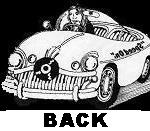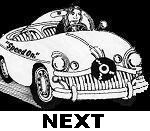Nicky Hopkins: Rock Session Man
By Franklin Hale
Contemporary Keyboard
January / February 1976
Nicky Hopkins is a small, soft-spoken man, the antithesis of the image of the superstar. He plays acoustic piano instead of multiple keyboards. But this unassuming Briton may have played on the albums of more of the giants of rock than any other keyboardist in history.
At the top of the roster of his credits is the fact that he has played on every Rolling Stones album since Their Satanic Majesties Request [London, NP5-2], with the exception of the "live" album recorded on the Stones' 1969 tour of the United States. Although he missed that tour, he was with The Stones in 1972, and appears hunched over his piano in the movie, Ladies And Gentlemen, The Rolling Stones.
In between Stones sessions, Hopkins has recorded several albums with The Who, and others with such British rock-ers as the Kinks and guitarists Jeff Beck and Peter Frampton. On this side of the Atlantic, he has performed and recorded with Jefferson Airplane (now Starship), appearing on their Volunteers album [RCA, LSP-4238], and for more than a year was a member of Quicksilver Mes-senger Service, during the period which began with their Shady Grove LP [Capi-tol, SKAO-391]. He is currently record-ing and touring with Jerry Garcia of the Grateful Dead.
Hopkins estimates the number of albums he has played on during the past ten years at "close to 500." His career began in 1962, when at the age of 18 he joined harmonica player Cyril Davis' blues band. Davis was an alumnus of the legendary Alexis Korner blues band, where many of Britain's rock superstars (including Stones vocalist Mick Jagger and Cream bassist Jack Bruce) got their start. Davis' band eventually replaced Korner's at the Marquee in London, and Hopkins recalls, "The Rolling Stones did the interval set. They filled in for about twenty minutes between our sets." He laughs. "Things have got a bit reversed since then."
Hopkins recorded only one single with Davis, a tune called "Country Line Special," before his career came to an abrupt, if temporary, halt. He was hos-pitalized. "I don't want to go into the details," he says, "but it was physical, not mental. I was in the hospital for nearly two years. When I came out, in December of 1964, I was told I couldn't go on the road, or anything strenuous like that."
Within a month, however, he had gotten a call from Cyril Davis' former drummer, asking if he felt up to doing a session. Among the musicians on that date were Jeff Beck and Jimmy Page, the latter the guitarist who subsequently rose to stardom with Led Zeppelin. The producer was Glyn Johns, who later became the producer for the Stones. Johns introduced Hopkins to Shel Talmy, who was producing sessions for The Who and the Kinks, among other bands, and the word began to get around that Hopkins was a pianist who could handle session work.
Talmy also produced solo singers, and he introduced Hopkins to that side of session work. "At first," Hopkins remembers, "the arrangers Shel brought in would write out massive reading things, which did me a lot of good, because I was a comparatively slow reader. At that time, recording was mainly two-track, and if you hit a wrong note, there might be up to a hundred players who had to do the whole song again."
But as time went on, both producers and arrangers got to know what Hop-kins could produce good piano tracks almost instinctively, without needing the printed page. He played on The Who's first album, My Generation [MCA, 2044], helping to compose one song, "The Ox." Since then he has helped out on Who's Next [MCA, 2023], Who By Numbers [MCA, 2161], the soundtrack for the movie of The Who's opera Tommy [Polydor, PD2-9502], and guitarist Pete Townshend's solo album Who Came First [MCA, 2026].
The Stones had recorded several of their early albums in the United States, but when they returned to British studios for Their Satanic Majesties Request, they naturally called on Hopkins to fill the, piano chair. "Actu-ally, the first thing I did with the Stones was the single, 'We Love You,' " he recalls. "That was in May of 1967. The piano riff that starts the song was an idea I'd had in me head for about three weeks, and it fit in beautifully." The piano line on "She's A Rainbow" from Satanic Majesties was also a Hopkins contribution.
Working with the Stones is very different from working with The Who, Hopkins points out. "Townshend is a bloody electronic genius. The Who have their own studio in South London, in Battersea, complete with a Bosendorfer piano that goes down to a bottom F, and Townshend has a duplicate of the studio in his own house, including the piano. He works out all his tunes on tape, so he always knows what he's aiming at.
"But the Stones don't," he continues. "Sometimes they spend two nights just working on a single backup track, because they don't have a fixed concept in mind." In general, Hopkins' approach to session work is flexible. "I just write out the chord changes, and work off that. I get the feel of it, and play whatever feels right."
Hopkins only did one cut for the Beatles while they were together: The electric piano on the single version of "Revolution" is his. More recently, he has worked on John Lennon's Imagirie [Apple, SW-3379] and Walls And Bridges [Apple, SW-3416], George Har-rison's Living In The Material World [Apple, SMAS-3410] and Dark Horse [Apple, SMAS-3418], and a Ringo Starr album or two. Hopkins himself is vague
about the names of many of the records he has appeared on. "I used to have them all written down somewhere," he shrugs. "I mean, I could sit here for half an hour and run off a list, but that'd be a bit silly. There's just been so many."
Although he has recorded with electric piano, and occasionally even on organ or synthesizer, he much prefers the acoustic sound. His major influences when he was growing up (aside from the ten years of classical lessons he took) were the acoustic rock piano greats of the Fifties - Fats Domino, Jerry Lee Lewis, and Little Richard. Later he became interested in the older boogie pianists, in particular Albert Ammons, Meade Lux Lewis, Pete Johnson, and Cripple Clarence Lofton. And although he admires contemporary keyboardists Chick Corea, Herbie Hancock, Keith Jarrett, and Bill Evans, they have had less influence on his own style.
"The electric piano is just a different instrument," he asserts. "You can't replace a grand piano with an electric. A lot of bands make the mistake of recording with an acoustic piano, and then going out on stage with an electric.
Using the electric is a lot easier than renting out a piano at each gig and then spending a half hour putting the pickup on it, but for me, the sound of the acoustic is worth the trouble."
On his recent tour with the Jerry Garcia band, Hopkins was spared the trouble of playing on rented pianos - he carried one with him. In place of the Countryman piano pickups he used for many years, he now has a Helpinstill [Helpinstill Designs, 6124 Jessamine, Houston, TX 77036]. "The Helpinstill has much less hum than the Countryman," he reports, "and you can turn it up much louder without getting feed-back. It works on a magnetic principle like a guitar pickup, with six metal bars that you mount as close to the strings as you can." Hopkins claims that getting adequate volume out of an acoustic piano has never been a problem for him.
"In the old days, all we had were contact mikes, but the bands weren't nearly as loud then as they are now." his first experience performing again after a six-year hiatus was when he joined the Jeff Beck group in 1968. "I was just sick of doing all these sessions," he recalls. But his experience with Beck was nearly disastrous. "Beck was on such a huge ego trip, I couldn't work with him. He kept copping out of tours halfway through, and I wasn't getting paid. So in June of 1969 I left." Less than two weeks later, Glyn Johns asked Hopkins to fly out to San Francisco to do a session with guitarist Steve Miller at the Wally Heider studio. While there, he met guitarist John Cipollina and bassist David Freiberg of Quicksilver Messenger Service, who asked him to help out with Shady Grove. By the time the album was finished, Hopkins had become a member of Quicksilver. "What started out to be a two week visit over here lasted for nearly two years, before I even went back to England for a visit," he muses.
During his first stay in the U.S. (he has since settled here permanently), Hopkins got married, and he and his wife Dolly acquired a big orange cat named Pig, who also plays piano. "Nobody'll believe me," Hopkins asserts, "but it's true. He used to climb up and sit on the music stand, which was down flat. He'd watch the hammers going up and down, and he'd watch me hitting the keys, and after a couple of days he figured it out. He got up on his hind legs on the piano stool, and by God, if he didn't play a bloody tune! "
Hopkins has recorded two solo albums, The Tin man Was A Dreamer [Columbia, KC 32074, now out of print], and, more recently, No More Changes [Mercury, SRM-1-1028]. "No More Changes honestly isn't as good as the first album," he admits. When Hopkins' tracks are remixed by other groups' producers, the piano often fades into the background, and on Changes as well, the piano has less presence than the bass and drums. The tunes are straight-forward, with piano chording, arpeggia-tion, and some tremolos in the right hand providing a setting for Hopkins' unaffected vocals.
The secret of Hopkins' success may be that his own style is so adaptable. "It's a hard thing for me to describe," he shrugs. "I can hear things in my playing that sound a bit like Albert Ammons, or in a rare instance maybe, like Rachmaninoff. But I don't knew if I sound like A, B, C, or D. I've assimila-ted so many people's styles of playing over the years, plus, I guess, me own as well."
 -
-
 -
-

 -
-
 -
-

 -
-
 -
-
